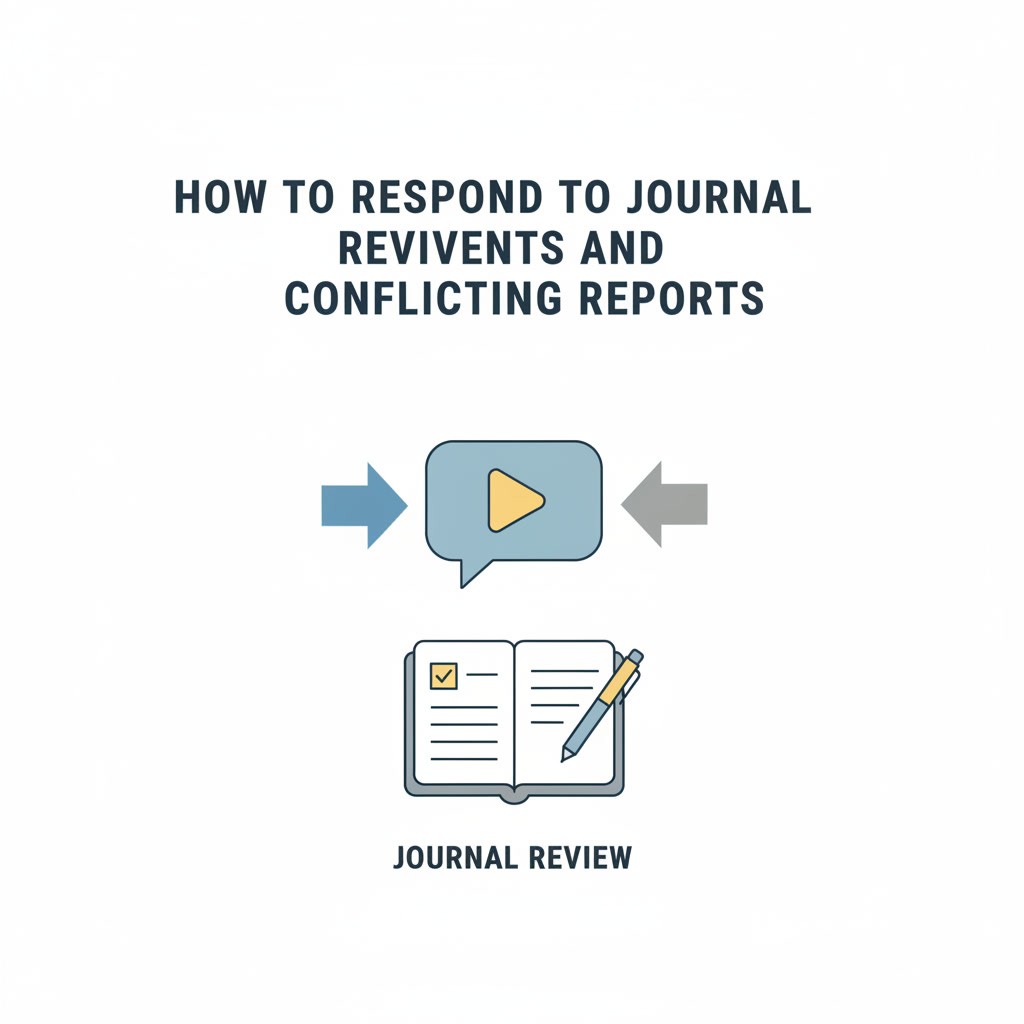Teaching Ethical AI in Academic Writing: A Guide for Professors and Instructors
AI is no longer a novelty in your classroom. As students adopt these tools faster than policies can keep up, teaching responsible AI academic writing has become a necessary part of your role. Students are using tools like ChatGPT to brainstorm ideas, structure essays, summarize sources, and generate citations. Often, they’re doing this before you’ve had a chance to establish clear expectations. As a professor, you may be asking a familiar question: how do you maintain academic standards when students have powerful AI tools at their fingertips?
The real challenge with AI in the classroom isn’t just technology—it’s academic integrity. As professors, you’re now responsible for teaching ethical AI for students in a rapidly changing environment. While some may consider banning tools like ChatGPT, many top universities are instead promoting guided experimentation and responsible use. Your role is to set expectations, shape student habits, and integrate ethical AI use into your academic toolkit.
This post offers you a practical framework designed for professors and instructors. You’ll find strategies for integrating responsible AI academic tools into your courses, guidance on fostering ethical use, and examples of how to support AI academic integrity without limiting student learning. Tools like thesify can help reinforce writing as a process that supports growth, not shortcuts.
What Is Ethical AI Use in Academic Writing?
Ethical AI use in academic writing involves transparent guidelines for students and clear standards from educators to maintain academic integrity. Understanding what makes AI use ethical helps you guide students in leveraging these tools responsibly, preserving critical thinking and originality.

Defining Responsible AI Practices for Students
Ethical AI academic writing becomes meaningful in practice when students understand what responsible engagement with these tools looks like in specific academic tasks. Simply put, responsible AI use means students rely on these tools to enhance—not replace—their own intellectual efforts.
Commonly accepted practices include using AI to brainstorm initial ideas, refine grammar, structure arguments, or receive writing feedback. Conversely, submitting unedited, AI-generated text as original work constitutes academic misconduct.
Leading universities emphasize clear guidelines for AI usage. Oxford University's official policies explicitly permit students to use AI assistance if fully acknowledged. Similarly, Stanford requires full disclosure of AI involvement and explicitly prohibits AI-generated completion of entire assignments. These institutional guidelines reinforce two key principles: transparency and original thought are non-negotiable when integrating AI into student writing.
Primary ethical concerns surrounding AI academic integrity include:
Plagiarism: Misuse of AI-generated text without proper attribution.
Data Privacy: Risks around students sharing sensitive or proprietary information with AI tools.
Skill Erosion: Potential for AI dependence to hinder the development of critical thinking, writing, and analytical reasoning skills.
Ultimately, ethical AI for students means clearly delineating how these tools should and shouldn’t be used. When AI serves as an aid—such as summarizing complex readings after initial study or identifying grammar errors in a draft—it supports genuine learning. When misused as a substitute for original effort, AI compromises academic integrity.
Common Misconceptions About AI in Academia
A widespread misconception among educators and students is the notion that all AI use equates to cheating. In reality, responsible AI academic writing is about clearly defined boundaries and transparency. Spell-check and grammar-checking software, once viewed skeptically, are now standard and accepted writing aids. Generative AI is on a similar trajectory—potentially helpful, provided that clear guidelines and proper acknowledgment practices are in place.
Another prevalent concern is that reliance on AI might stunt students' growth in essential skills like writing and reasoning. Universities emphasize responsible use precisely because they aim to preserve and foster students' critical thinking, creativity, and problem-solving capabilities despite the growing presence of AI.
Harvard’s guidelines summarize the ethical stance succinctly: academic integrity requires students to openly credit AI assistance just as they would any other external source. When you clearly articulate this principle, and students understand it, AI transitions from perceived threat to educational ally, reinforcing rather than replacing the core intellectual skills academia values.
Practical Strategies for Teaching Responsible AI Use
You can take proactive steps right now to guide students on using AI wisely. Below are actionable strategies and AI academic writing guidelines you can implement in your courses to foster ethical AI usage:
Set Clear Syllabus Policies on AI:
Include a detailed AI usage statement in your syllabus. Specify which AI tools (if any) are allowed and for what purposes. For example, you might permit AI for proofreading or idea generation but not for writing final submissions. Make it clear that turning in AI-generated work unedited is cheating and violates academic integrity. A transparent policy removes confusion and gives students a framework for ethical AI use in university assignments.
Design “AI-Resistant” Assignments:
Craft assignments that encourage original thought and personal input, making it harder for AI to do all the work. You can require students to show their work and thought process in submissions.
For instance, ask for an outline, multiple draft iterations, or a reflection on how they developed their argument. One professor suggests reframing prompts to require analysis instead of recall – e.g. rather than “What is the Krebs cycle?”, ask students to revise a flawed explanation of the Krebs cycle, explaining their improvements. This way, even if AI is used, students must engage critically with the material, using their own reasoning.
Teach AI Literacy in the Classroom:
Dedicate some class time to demonstrate and discuss AI tools. Show students how an AI chatbot might be used for brainstorming or improving a draft, and also highlight its limitations and biases. By openly exploring AI in a guided setting, you demystify it.
Encourage students to ask questions and share their experiences. This can include activities like comparing an AI-written paragraph with a student-written one to discuss quality, or having AI produce two versions of a passage and having students critique which is better and why. Such exercises reinforce that AI is a starting point, not the final answer.
Encourage Transparency and Reflection:
Make it a class norm that if students use AI, they should say so. You might require a brief note with each assignment: “I used [Tool] to help with X part of this assignment.” Some instructors even ask students to submit their editing history or AI chat logs with the assignment. This not only deters unethical use but also turns AI into a learning moment – students reflect on how the AI helped and what they did themselves.
One effective approach is having students write a reflection on how AI influenced their process, including any pitfalls they noticed (such as AI making up a source, which they then had to double-check).
Classroom Idea: Ask students to submit an AI academic writing guidelines reflection with each assignment. A short paragraph explaining how they used AI (or why they didn’t) encourages transparency and helps build responsible habits around academic tools.
This reinforces the importance of using responsible AI academic tools with full human oversight, ensuring students understand where the AI ends and their own thinking begins.
Incorporate AI in Low-Stakes Tasks:
To remove the “forbidden fruit” temptation, consider allowing or even requiring AI use in small assignments aimed at skill-building. For example, you might have a draft workshop where students must run their draft through an AI tool (like a grammar checker or thesify) and then improve their work based on the feedback.
By making AI a normal part of revision (and not something to hide), you can actively teach students how to use AI without cheating—giving them hands-on experience with responsible tools in a structured, ethical way.
In fact, some professors have gone as far as assigning ChatGPT for idea generation so students learn to critique and build on those AI-generated ideas. The key is supervision and follow-up discussion about what the AI got right or wrong.
Professor Tip: Want to show students how to use AI without cheating? Assign a low-stakes draft or reflection task where they must apply AI and critique what it gets right—and wrong. This turns experimentation into ethical learning.
Model Ethical AI Use to Reinforce AI Academic Integrity:
Finally, lead by example. You can share with students if you used AI to, say, create a syllabus outline or generate quiz questions (many educators do use AI for such tasks). By being open about your own appropriate uses, you normalize ethical behavior.
You might even show an AI-produced example that you then improved, demonstrating the value of human expertise. This transparency on your part fosters a culture of trust and reinforces AI academic integrity—showing students that ethical use starts with leadership.
Lead by Example: Consider showing your students how you’ve used AI tools for your own academic workflow—like generating quiz questions or outlining a reading guide. When students see responsible AI academic writing in action, they’re more likely to follow your lead.
By implementing these strategies, you send a clear message: AI should support learning goals, not replace the intellectual effort required to meet them. Students guided in this way are more likely to engage with AI in productive, honest ways that enhance their skills.
Best Practices and Common Mistakes in Guiding AI Use
Teaching in the AI era is new territory. Through trial and error, educators are identifying what works — and what missteps to avoid. Here are some best practices to adopt, along with common mistakes to steer clear of:
Best Practices and AI Academic Writing Guidelines for Professors
Emphasize Writing as Process: Frame writing assignments as a process where AI can play a minor supporting role, similar to a tutor or writing center. This helps students understand that using AI for brainstorming or editing is akin to other help they’d normally seek — it’s part of the process, but their own ideas and words must drive the product.
Stay Updated on Policies: Keep yourself informed about your institution’s latest AI guidelines and talk openly about them with students. If the university requires AI use disclosure or bans certain tools, integrate that into your class rules. Consistency with institutional policy is key to avoiding confusion.
Promote Ethical Reasoning: Create in-class discussions around AI academic writing guidelines, helping students evaluate tools and reflect on what constitutes responsible versus unethical use. For example, ask them: “Is using thesify the same as using ChatGPT? Why or why not?” Such conversations build their moral reasoning. Students who think through these questions are less likely to misuse tools because they understand the why behind the rules.
Use AI to Enhance, Not Replace, Learning: Whenever you integrate an AI tool, ensure it’s adding educational value. For instance, if you allow an AI-based summary tool, have students compare the summary to the original text and critique it. This way the tool becomes a springboard for deeper learning (checking accuracy, identifying bias) rather than a cheat-sheet. Always ask, “How does this use of AI help students learn better?” as a litmus test.
Avoiding Common Mistakes in AI Integration
Blanket Bans Without Guidance: Simply outlawing AI in your class may seem like taking a stand for integrity, but it often backfires. Students might use it covertly out of curiosity or desperation, without any framework for responsible use.
A major university like Yale explicitly decided not to ban ChatGPT, instead focusing on education and guidelines. Bans can create a culture of fear; guidance creates a culture of learning.
Relying on Detection Tools Alone: It’s tempting to lean on AI-detection software to catch misuse, but this is problematic. Detection tools are often unreliable and prone to false positives. Trusting them blindly can lead to accusing innocent students or giving a false sense of security. It’s a mistake to make detection the centerpiece of your strategy. It’s far better to prevent misconduct through assignment design and student buy-in than to try to “catch” it after the fact.
Failing to Communicate Expectations: Some professors assume students “should know” what is allowed with AI. In reality, students are navigating varying messages across courses and schools. Not explicitly stating your expectations is a recipe for misunderstandings. Even a simple oversight like not mentioning whether AI-generated citations are acceptable can lead to problems. Don’t leave these things to guesswork – spell it out clearly.
Ignoring the Learning Curve: Another pitfall is expecting that students (or even faculty) intuitively know how to use new AI tools properly. In truth, there’s a learning curve. If no guidance or training is provided, students may misuse the tool out of ignorance.
For example, they might trust an AI’s fake reference without knowing they should verify it (AI is known to sometimes fabricate sources if prompted for citations). Assuming everyone will automatically use AI well is a mistake; instead, take time to show best practices.
Overlooking Equity and Access: Keep in mind not all students have equal access or familiarity with the latest AI. A common mistake is designing homework that implicitly requires AI tools without ensuring everyone can use them (or providing alternatives).
If AI is optional and a student chooses not to use it, ensure they aren’t disadvantaged. Conversely, if you forbid AI, recognize that some students with disabilities or language barriers might benefit from tools (like text-to-speech or translation) that blur the line with “AI.” Be thoughtful and flexible to maintain fairness.
By following best practices and sidestepping these common errors, you can create a learning environment that upholds integrity and equips students with valuable digital literacy skills. Remember, our goal is to produce graduates who can navigate a world full of AI ethically and effectively.
Case Studies: Ethical AI Integration in Higher Education
Theory is important, but how does this look in practice? Let’s examine a few case studies and examples of ethical AI use in academic settings that showcase success:
University Embracing AI with Guidelines – Yale University:
Yale University has taken a decentralized, instructor-led approach to AI in the classroom. Rather than issuing a blanket policy, the university encouraged individual faculty members to establish course-specific AI policies, supported by pedagogical resources from the teaching center.
This approach fostered a culture of open dialogue around AI use. Instead of framing AI as a threat, Yale treated it as a teaching opportunity—one that required thoughtful integration and clear expectations. Faculty were empowered to design their own policies, experiment with instructional strategies, and discuss ethical AI use directly with students.
As a result, students at Yale are learning to engage with AI academic writing tools in supervised, reflective ways. By prioritizing education over enforcement, the university has created space for professors and students to collaboratively explore how AI can support learning without undermining academic standards.
Classroom Assignment with Mandatory AI Use – Wharton School:
In a bold experiment, a professor at Wharton (University of Pennsylvania) required his students to use ChatGPT for certain parts of an assignment. The task was structured so that students used AI to generate initial ideas and even draft segments, but then had to critically revise and expand on them.
By making AI use mandatory in a controlled way, the professor demystified the tool and turned the exercise into one about editing and critical thinking. Students learned first-hand the limitations of AI (since the raw chatbot output often needed substantial improvement) and how to improve AI-generated content ethically.
This aligns perfectly with teaching how to use AI as a helper: the AI did the grunt work of providing a draft, and the students did the intellectual work of refining it. Such case studies report that students felt less temptation to misuse AI elsewhere because they had a sanctioned outlet to experiment and see what it can and cannot do.
Using thesify for Ethical Writing Improvement – A Student’s Experience:
Consider the example of a graduate student who revisited an old undergraduate paper using thesify, an AI writing assistant. Instead of getting a pre-written essay, the student received targeted, expert feedback on their draft. thesify highlighted weaknesses in the argument, clarity issues, and areas to improve, all while preserving the student’s own voice and integrity. The student treated the thesify feedback like a detailed critique from a writing tutor. Over several revisions, they strengthened their thesis and organization without ever handing over the creative process to the AI.
This real-world test shows that when using responsible ai academic tools designed for education, students can significantly improve their work ethically. In fact, the downloadable feedback report thesify provides became a learning tool in itself – the student could show it to their professor to discuss improvements, demonstrating transparency in how AI was used to enhance (not replace) their writing.
Proof of Concept: Draft Logs for Integrity – University of Jyväskylä:
A professor in Finland piloted an assignment policy requiring students to submit document revision histories alongside their final essays. These logs, which can be generated by tools like Google Docs or thesify’s editor, offer a clear record of each student’s writing process.
Rather than focusing on detection, the goal was to create an accountability structure that nudged students toward meaningful revision. Students who tried to submit AI-generated content with minimal changes had little to show in their logs, while those who developed their work iteratively demonstrated rich editing trails. Over time, the logs encouraged students to reflect on their writing habits and engage more deeply with the revision process.
This example highlights how responsible AI academic tools can promote transparency without punitive measures—helping students internalize the value of revision, authorship, and ethical academic writing.
University Initiatives Promoting Responsible AI Use
Each of these examples shows that when guided by thoughtful instruction, AI becomes a powerful tool for deepening student learning, rather than a shortcut to bypass it. Whether it’s a university-wide stance like Yale’s or a specific classroom experiment, success comes from aligning AI use with pedagogical goals.
Students respond well when they understand why certain AI use is encouraged and other use is off-limits. And as the thesify story shows, having the right tools makes all the difference – an AI assistant that adheres to academic integrity principles can be a game-changer in writing education.
Leveraging thesify’s Responsible AI Academic Tools to Support Ethical AI Use
No discussion of responsible AI in academic writing is complete without looking at the tools themselves. One reason thesify was created was to provide an ethical AI writing tool built for academia. Unlike general-purpose AI chatbots that might generate entire essays (and tempt misuse), thesify is designed to enhance student writing while upholding integrity.
Here’s how you and your students can utilize thesify’s key features to foster responsible AI use:
Pre-Submission Feedback Review:
thesify’s core feature is an AI-powered Pre-Submission Review that analyzes a student’s draft and gives comprehensive feedback. This includes critiques on clarity, structure, argument strength, use of evidence, and more. For example, thesify will check if the thesis statement is clear and well-supported, flag sections that lack coherence, and even evaluate the balance of sources and citations.

All this feedback is aligned with academic standards – effectively like having a personal writing coach. Importantly, the student must still do the rewriting and improvements themselves. thesify doesn’t rewrite paragraphs for your students; it points out areas to improve. This ensures your student remain the author, thereby maintaining ai academic integrity. You can encourage your students to run their drafts through thesify to get this kind of formative feedback before turning in a final paper. It’s a great way to improve writing without any risk of cheating, since the tool isn’t providing new content, just guidance.
thesify’s Downloadable Feedback Report:
A standout thesify feature is the downloadable feedback report. After the AI finishes analyzing a document, the student can download a full report detailing all the feedback and evaluations. The report typically includes feedback on thesis strength, clarity and purpose, quality of evidence, and overall readability of the essay.

For students, the report is like a roadmap to revision – and because it’s downloadable, they can easily share it with their professors or writing tutors.
From an instructor’s perspective, you could ask students to submit their thesify feedback report along with their paper. This way, you see exactly what suggestions came from AI. It also encourages students to engage with the feedback (since you’ll be aware of it) and it adds an extra layer of transparency to AI use.
Tip for Instructors: Use the thesify Feedback Report as a discussion tool during office hours or peer review sessions. Asking students to walk you through how they responded to the feedback encourages reflection and reinforces responsible AI academic writing in a more interactive way.
Finally, as the thesify team noted, having access to all feedback offline means students can continue refining their work anywhere, bridging the gap between online AI help and traditional editing. This feature turns AI feedback into a learning moment rather than a hidden advantage.
Emphasis on Academic Integrity:
thesify was built with ethical use in mind. It explicitly will not write essays for students. In fact, using thesify is unlikely to ever trigger plagiarism detectors because it doesn’t insert any external text; it only analyzes the student’s own writing and offers suggestions.

The student’s work remains private – it’s not shared or added to any database, so there’s no risk of data misuse. For professors concerned about AI tools violating privacy or students submitting something that isn’t their work, thesify provides peace of mind. Students keep full ownership of their writing, and the AI is a mentor, not a ghostwriter. thesify’s approach aligns with responsible AI academic writing principles: it helps improve the quality and rigor of student writing while ensuring the student’s voice and original effort stay central.

Features that Promote Ethical Skills:
Beyond feedback, thesify has features such as Semantic Search, State of the Art Overview (SOTA), and Paper Digest. These tools help students develop strong research and writing habits that align with academic integrity.
For example, SOTA provides a comprehensive overview of the current research landscape related to a student’s topic. It highlights key debates, identifies gaps in the literature, and surfaces emerging trends—enabling students to position their work within the broader scholarly conversation.

This steers students toward proper high quality research and attribution rather than, say, copying uncited material from the internet. It addresses one root cause of plagiarism (difficulty finding sources) by making legitimate research easier.
thesify’s Paper Digest feature summarizes academic articles, which students can use to understand literature without resorting to questionable essay-summary sites. By integrating these capabilities, thesify encourages students to do the right thing – cite sources, read research – with AI making it more convenient.

Professors can highlight to students that using thesify’s reference suggestions is an ethical way to save time, as opposed to using AI to fabricate quotes or bibliographies. It’s the difference between a responsible ai academic tool and an irresponsible shortcut.
Teaching Strategy: Introduce thesify’s PaperDigest or SOTA feature during your research or writing instruction. By walking students through ethical summarization and citation methods, you reinforce ethical AI for students and help them build research habits aligned with academic integrity.
How thesify Supports Responsible AI Use Among Students
In summary, thesify acts as a training wheels AI for academic writing. It provides guidance and resources akin to what a conscientious instructor or TA would give, but it leaves the driving to the student. By incorporating thesify into your teaching (for instance, offering it as an optional aid or demonstrating it in class), you give students access to AI that is explicitly geared toward learning and integrity. This can channel their curiosity about AI into productive improvement of their work, under a framework you trust. When students see that a tool can help them meet high academic standards without crossing ethical lines, they’re more likely to stick to approved tools and methods.
Empowering Educators to Foster Ethical AI Practices
Navigating AI in education requires a balanced approach. Professors who proactively teach responsible ai academic writing are not just preventing misconduct – they are empowering students with skills for the future. By clearly defining what ethical AI use looks like, implementing smart classroom strategies, and embracing tools like thesify that promote integrity, you can transform AI from a source of confusion into a structured, teachable part of the academic writing process.
The message to your students should be clear: AI is already shaping how they write and learn—and your guidance is essential to help them use it responsibly as capable writers and researchers.
As you update your courses, remember that consistency and communication are key. Encourage questions, stay flexible as policies evolve, and share success stories of ethical AI use. The examples in this article from Yale, Wharton, and real student experiences show that with the right structure and support, AI use can actively strengthen critical thinking and writing skills instead of eroding them.
In the end, maintaining AI academic integrity in the age of AI isn’t about clinging to old ways or embracing every new gadget blindly – it’s about guiding the next generation to be thoughtful, honest, and innovative scholars. By modeling responsible AI use and setting clear expectations, you give your students the foundation they need to engage with these tools ethically and effectively.
Ready to reinforce AI academic integrity and support your students in using AI responsibly?
thesify offers ethical, student-centered tools like the downloadable Feedback Report and Pre-Submission Review to help you promote academic integrity in every assignment.

Related Posts
Ethical Use Cases of AI in Academic Writing: A 2025 Guide for Students and Researchers: Discover specific examples of how students and researchers can use AI ethically in their writing process (brainstorming, literature review, etc.)
When Does AI Use Become Plagiarism? A Student Guide to Avoiding Academic Misconduct: Learn about the fine line between acceptable assistance and plagiarism when using AI, and get tips on how to stay on the right side of academic honesty.
Generative AI Policies at the World’s Top Universities: A breakdown of how top institutions like Oxford, Stanford, and Harvard are handling AI usage, from disclosure requirements to outright bans, and what that means for students and faculty

















